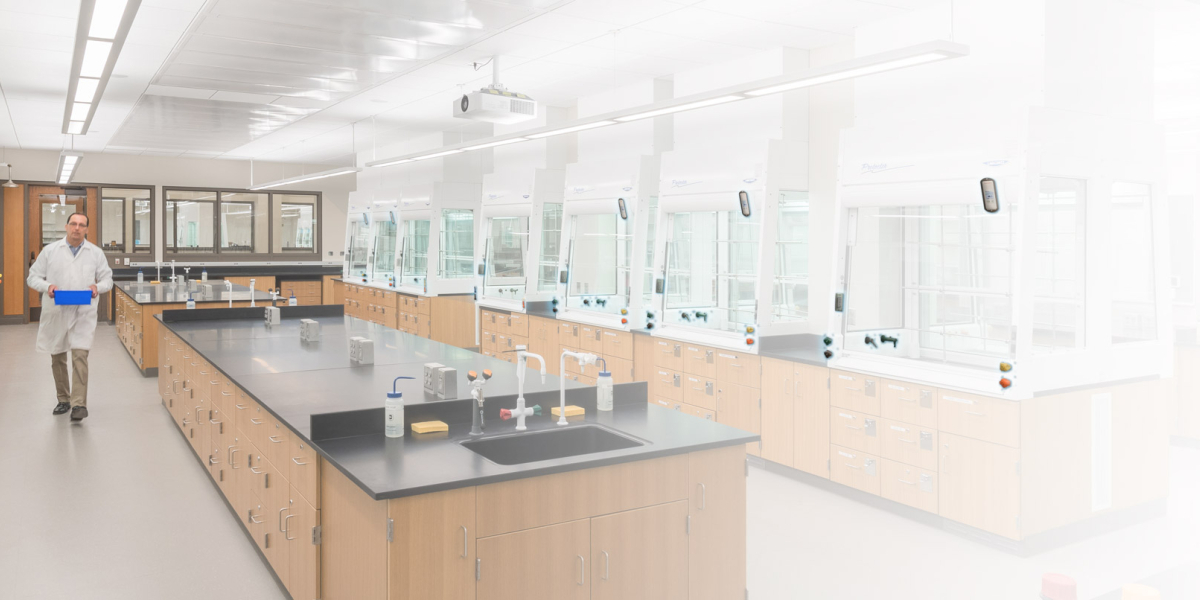I chose a fume hood, what accessories do I need?

So you’ve done your research and selected your fume hood. Now what do you do? Accessorize! There are many possible accessories for fume hoods depending on your hood type, chemical application, and organization specifications. Some are required while others are optional.
First, let’s look at required accessories.
Required Accessories
Unless you’ve selected a special application hood with an integral work surface, you’ll need a separate work surface. The most popular is black epoxy. The Protector Fume Hood line works with SpillStopper™ Work Surfaces. These are solid epoxy with a dished working area to contain spills and a curved radius on the front to direct air into the hood. Other hoods are designed to work with flat work surfaces.
The next step is determining where you’ll place your new hood and work surface. If you have an existing counter, that will work but it must be able to support the weight so be sure to check with your facilities manager. If you don’t have an existing counter, you’ll need a base cabinet or a base stand. Cabinets are more popular as they offer storage for chemicals and supplies. Labconco Protector Base Cabinets are available for acid, solvent or general storage in both standard and ADA heights.
The most common accessory for a fume hood is an airflow monitor. This can tell you if your hood is maintaining a safe airflow within the hood to keep fumes from escaping. Analog models give a simple safe/unsafe and alarm to low airflow conditions. Digital alarms display the level of airflow detected on the sensor in real time. Variable air volume (VAV) systems have their own monitors. If you have a constant volume system, you’ll need to order one.
Most hoods don’t include an integral blower, so you’ll need to select a remote blower. Remote blowers are available in coated steel, fiberglass and PVC. Your application will determine which material you need for your blower. Don’t forget ductwork for your blower as well. You’ll need connectors and a damper. A Zero Pressure Weathercap is also highly recommended.
Next is a plethora of optional accessories.
Optional Accessories
Service fixtures and electrical receptacles are other popular accessories. Service fixtures allow for water, air, vacuum or a range of gases to be run through the hood. Labconco service fixtures have knobs on the outside of the hood for easy and safe access, even when the sash is down. Electrical receptacles are located on the front outside of the hood to power equipment being used in the hood.
Cupsinks provide a way to dump liquids to a drain without removing them from the hood. You’ll need to order a work surface with a cupsink cutout in the placement you desire. A cupsink cover can be ordered to hide the cupsink when not in use.
Snuffer™ Fire Extinguishers work inside Protector and Basic hoods. A fusible link melts at 155º F (68º C) and chemical powder automatically discharges within 5 seconds to extinguish the fire. Factory installation is recommended.
Ceiling Enclosure Kits have panels to install above the hood to hide exposed ductwork, plumbing and wiring. Rear Finish Panel Kits hide the hood’s interior components visible when the hood is mounted on a counter island or peninsula. Tissue Screens mount behind the baffle to trap wipes and other papers before they can move into the ductwork. Distillation Grids provide structure to hook tall apparatus inside the hood. Sash Stops restrict how far a sash may be raised, essentially providing a “safety stop.”
Get Expert Help
The exact accessories that are right for you depend on your hood, work surface and base. Your Labconco sales representative can help you select the accessories for your hood.
| chevron_left | 3 ways to get the most out of a high performance lab ventilation system | Articles | Fume Hood Basics: 5 Best Practices | chevron_right |





